Here’s to a Year of American and Global Comeback
“In the midst of death, we are in life.” With stoic resolve, the words of that medieval prayer point toward a path of hope in times of trial; they provide an example we may still benefit from, no less today than when they were first written seven centuries ago. Though we are now enduring the third winter of COVID-19—accentuated by a new variant bringing with it the specter of renewed lockdowns—I believe future historians will mark 2021 as the year we turned the tide against the pandemic. Fortified by new vaccines, new treatments, and a restored confidence in our purpose and ability to overcome, 2022 will be the year when we turn to new realities.
As we emerge onto the post-Covid landscape in 2022, the virus will still be with us. But it will have yielded center stage—both to pre-existing trends it accelerated, and to new realities it created.
Dominating the former camp is the intensifying wariness of China and its unmanaged rise, now spreading across the Western world. Though storm clouds have been gathering for years, even the deepest China skeptics would not have predicted that it would give rise to a disease which has since killed over five million and infected nearly 300 million more. And while that might be dismissed as an accident of fate, the opacity with which Chinese authorities have responded to the outbreak, muzzling all attempts to unearth with certainty the truth of its origins, speaks to a sickness of a fundamentally different kind.
As 2022 dawns, it seems all but certain that China will lead the roster of the three major challenges likely to dominate the geopolitical map. Ever since President Xi Jinping’s rise to power, his government has grown increasingly centralized, authoritarian, and brittle. From the repression of the Uyghurs and the social credit system, to the turn toward jingoistic expansionism in the South China Sea and across the Straits of Taiwan, China’s borders are accumulating a growing list of hot spots. Managing these hot spots and preventing them from erupting into full-blown crises between great powers is a task of the highest order.
Not far behind Beijing is Moscow. Ever mercurial, President Putin has recently turned Russian policy in a sharply revanchist direction. According to Ukraine, Russia has amassed roughly 90,000 troops at the border; according to US intelligence reports, a Russian invasion of Ukraine is possible in the early months of 2022. Putin has proved his willingness to test Western resolve and international norms on the Ukrainian footprint twice before, and with reason. As the old adage goes, “with Ukraine, Russia is an empire. Without it, it is just another country.”
Lastly and—from a Middle Eastern perspective—most menacingly, Tehran’s regional ambitions have not dimmed in the slightest. Nor have its nuclear and ballistic missile programs. Despite nearly a year of renewed negotiations with the P5+1 in Vienna, no discernible progress has been made, and even the European negotiators appear to have reached the limits of what good faith will bear. As a joint Anglo-French-German statement put it, “We are rapidly reaching the end of the road for this negotiation.”
Between them, these challenges constitute a test not only to the security of Europe and Asia, but to the resilience of democratic governance, the sanctity of individual rights, and the liberal faith that the arc of history bends toward progress. In a real sense, all these hang in the balance.
And yet. Despite the challenges from without, the liberal order can only truly fall if it loses faith in itself. Its economic, technological, and cultural dynamism are all unprecedented in human history, unrivalled by any of their would-be challengers. Its might, when properly wielded, is still awe-inspiring. In some ways, this may be easier for an outsider to see from afar, unburdened as we are by partisan affiliations, than it is for many Americans and Europeans, focused as they are on the political contests of the hour.
President Biden, who began this year to such fanfare, has ended it a wounded figure. Yet, to this outsider’s eye, one fact of this year stands out, impossible to avoid. The turn in President Biden’s fortunes began after the withdrawal from Afghanistan. While no one would say that Americans have not sunk more than their fair share of blood and treasure into that troubled land, it is also true that the withdrawal’s execution was marked by a certain cavalier attitude toward America’s global standing, and to the signal it would send to those who mean her ill.
The lesson, for those who wish America and her allies well, points to itself. The enemies of the liberal order can make headway only when the firmest defenders of that order lose their faith. Where the West stands firm, it cannot be moved. The challengers noted above are all beset by problems of their own far more severe than anything afflicting Washington or Brussels.
For all its aggressiveness, Russian power is sunsetting, weighed down by demographic erosion and an economy smaller than South Korea’s. For all its menace, the Chinese political system remains inherently brittle and weaker than it appears. In its drive to strengthen the Communist Party’s control over the country’s most successful technology firms, it evinces little understanding of the forces which have driven China’s economic miracle, and risks all. And for all its ancient glory and modern ambition, Iran is a nation whose inherent greatness is sapped by crippling, endemic corruption and foreign adventurism seemingly without end.
And so, in the midst of despair, we are in hope. While some in America may adopt a dark view of their reality, I see an amazing and resilient country that remains the fulcrum of the world. Let the challenges of 2022 come; they will find their match in you America.
Warm regards,
Ahmed Charai



